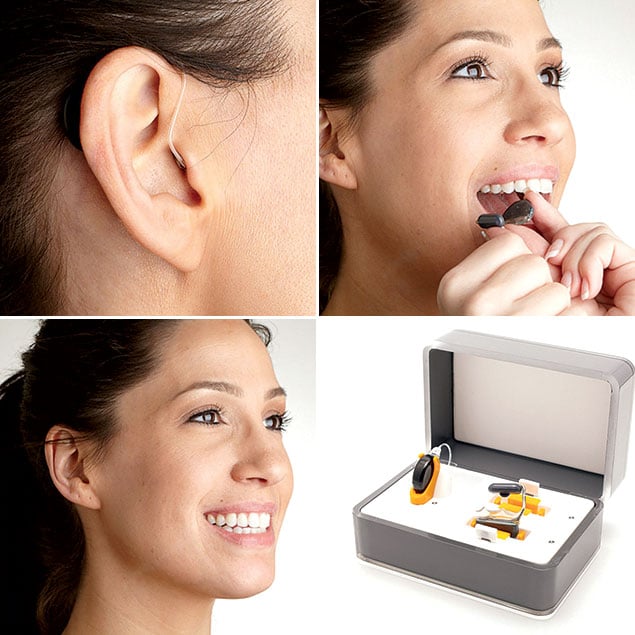Bob Valentine was due for surgery. After losing hearing in his
left ear, he was ready to have a hole drilled into his skull to insert a
cochlear implant. But he heard about another option.
For the past few years, a team of Washington physicians, along
with doctors across the country, has been working with California-based
Sonitus Medical to develop a tiny device that helps patients regain
hearing. The result is SoundBite, a prosthesis that transmits sound with
the help of teeth.
“It’s producing outstanding results,” says Lawrence D. Singer,
an assistant clinical professor of surgery at George Washington University
Hospital who was involved in the process and worked to fit
Valentine.
SoundBite is equipped with two devices, a behind-the-ear
processor hooked up to a microphone in the ear canal and a retainer-like
piece fitted to the upper back teeth. The parts work in tandem using bone
conduction to transmit sound, which is first picked up by the ear mike and
transmitted to the mouthpiece. Sound vibrations are sent through the teeth
and bone to the damaged cochlea or ear canal. The sound is rerouted to the
good cochlea, restoring the perception of hearing.
The FDA-approved SoundBite came at just the right time for
Valentine, 69: “I’m shocked that I can cover my good ear and still hear in
my deaf ear. It’s like I never lost hearing.” At 1½ centimeters, the
hearing piece is nearly invisible to the naked eye; it sits within the
canal of the impaired ear. Valentine says that while it took some getting
used to, the mouthpiece doesn’t affect his eating.
Only 120 offices in the country offer SoundBite, including
Singer’s practice. Once a patient has been evaluated by an ear, nose, and
throat doctor, Singer’s role is to make sure the mouthpiece is compatible
with the patient’s bite.
He’s working with a couple dozen patients who have been fitted
with SoundBite, but the device is still a work in progress. “The battery
technology is what’s holding SoundBite back,” says Singer. Currently, the
rechargeable batteries last only eight hours. Also, for now SoundBite is
limited to patients who are deaf in one ear or suffer from conductive
hearing loss, which involves a reduction in sound level. SoundBite is
projected to cost $8,000, though a current discount has it priced at
$6,800.
Cochlear implants are still the best option for people who are
severely hard of hearing or completely deaf and can no longer benefit from
hearing aids, says Dr. Ashkan Monfared, director of otology and
neurotology at the GW Medical Faculty Associates.
The continued development of SoundBite is especially important
to Singer—his seven-year-old son was born with a hearing
defect.


















